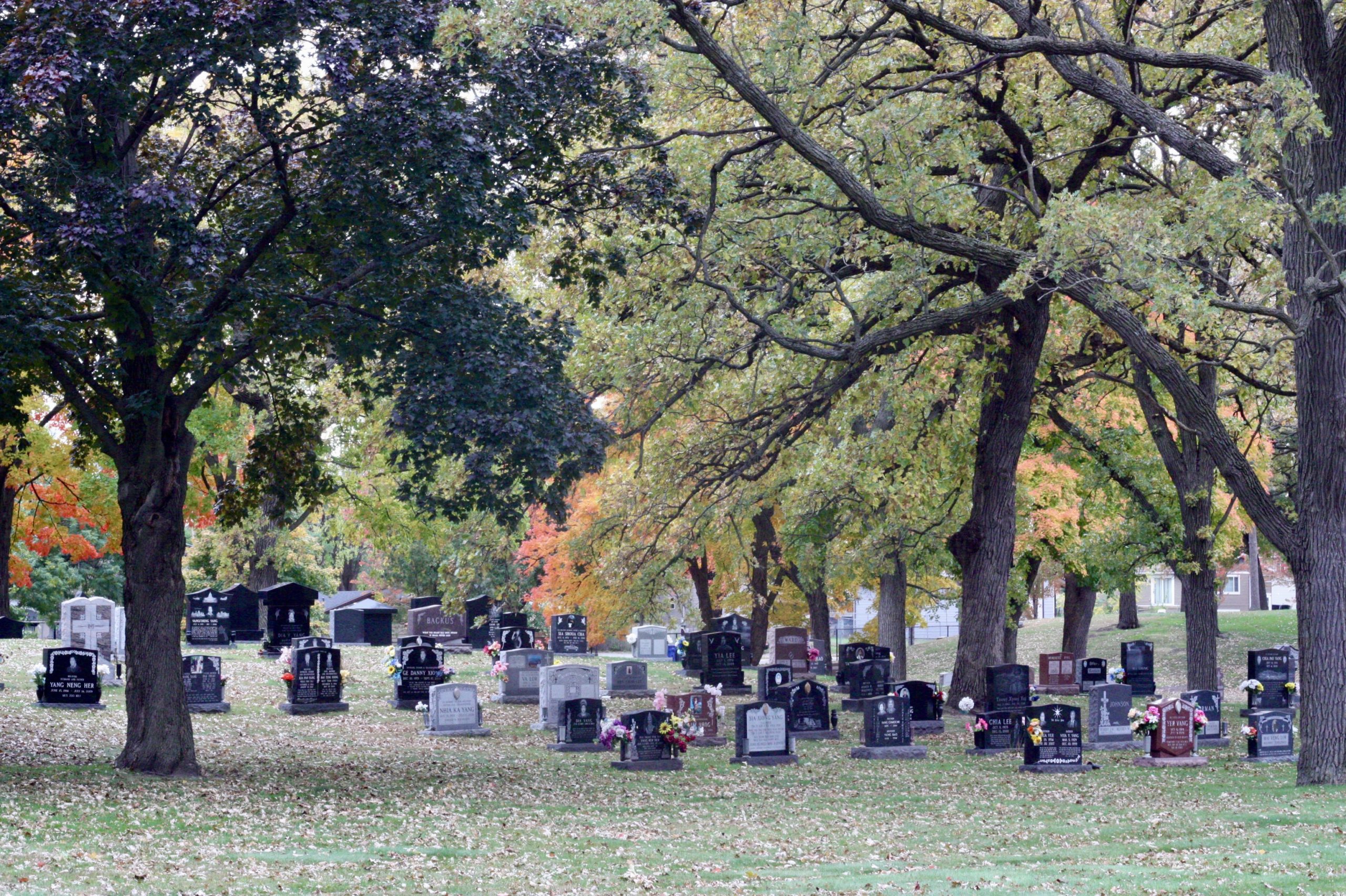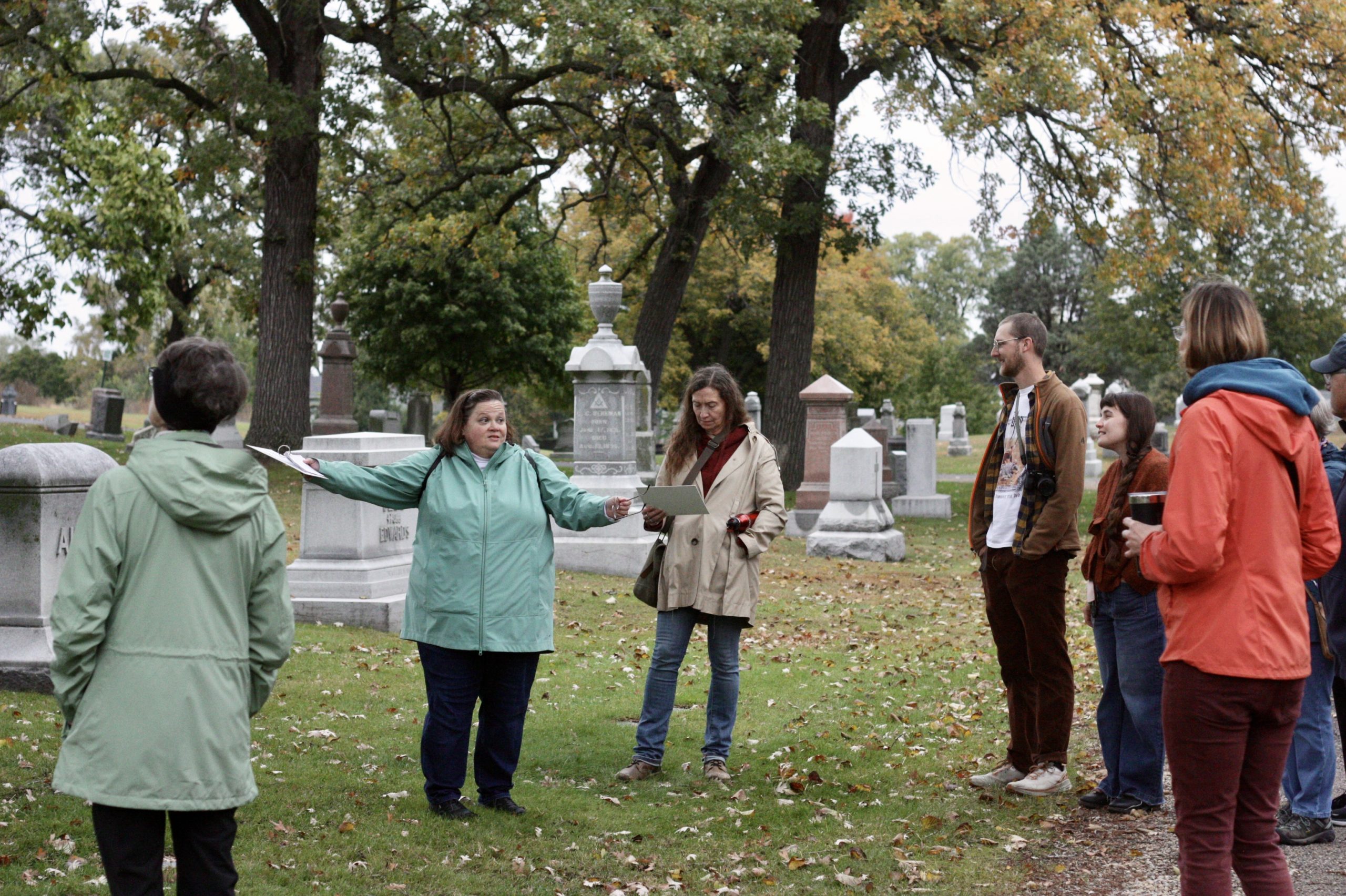October’s History Revealed at Oakland Cemetery
There is no better time of year than Autumn to visit St. Paul’s historic Oakland Cemetery!

The colors of the changing leaves were the perfect backdrop for Denise Dunnell Wells’ cemetery walking tours, where she regaled us with stories of Saint Paulites now passed. Armed with sweaters, scarfs, and mittens, our groups had the opportunity to see the resting places of significant figures, as well as to learn the history of the cemetery and the mourning traditions of the different cultures that have used this cemetery since its inception. For the North End tour, guests saw the original entrance to the cemetery where Alexander Ramsey, Ramsey County’s namesake, is buried alongside other influential people of the time. On the South End tour, we visited the first mausoleum in Minnesota, as well as the historic chapel on the cemetery grounds. The tour is brought into the present through an exploration of Hmong grave sites and symbols, as they are one of the most recent communities to choose Oakland Cemetery as the location to honor their dead. By the end of the tours, groups were excitedly sharing their own stories and connections to the site. Embracing the last few warm afternoons of the year, these tours have become an engaging fall tradition.

About Denise Dunnell Wells:
Denise Dunnell Wells is a former Alexander Ramsey House docent and has led many popular tours of Irvine Park. She has been a history volunteer for over 25 years and currently serves as a volunteer and tour guide for both RCHS and MHS.
About Oakland Cemetery:
Oakland Cemetery is the Midwest’s oldest operating cemetery and has been a place of internment for many different groups in the Ramsey County community. There are lots for Civil War and Spanish-American War veterans, firefighters, and a variety of nationalities. The cemetery has a park-like quality with over 25,000 trees and many walking paths. In its current era, the cemetery has become a final resting area for many members of the Hmong community, which has put our current landscape in conversation with the pioneers who made this area what it is.